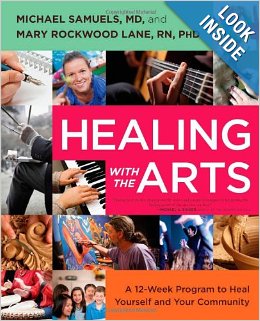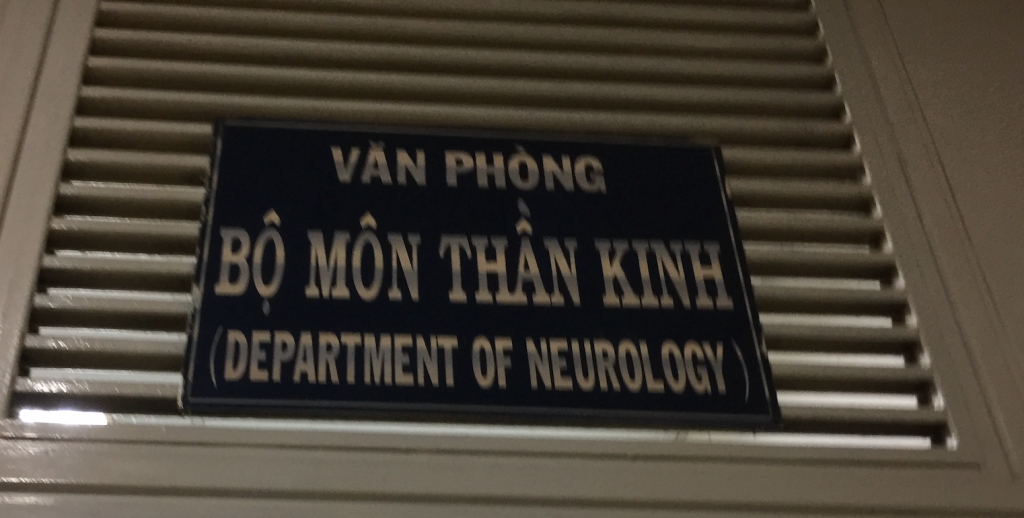Posts Tagged ‘Alzheimer’s Disease’
Celebrating our Mothers
If my mother were still alive, I would be taking her roses and chocolate this Mother’s Day. She would be delighted and her delight would magnify when my daughters and her great-grandchildren arrived. Love is such a beautiful glue, such a simple and strong way to stay connected. I wanted to share this story from Love in the Land of Dementia, as a way of celebrating our mothers.
The Woman She Was
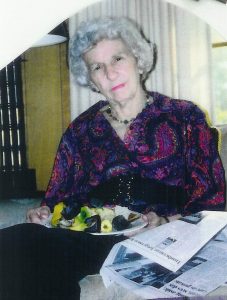 My friend Karen gives me a gift: she says, “Tell me about your mother.”
My friend Karen gives me a gift: she says, “Tell me about your mother.”
We are sitting in a quiet mid-afternoon café and I let the question sink into me.
When friends occasionally ask me, “How is your mother doing?” I have different answers, depending on the situation. If we are in one of those conversations that are like confetti in brisk wind, I say, “She’s okay.”
If we are sitting across from each other and my friend is looking right at me, I answer, “She’s pretty deep into Alzheimer’s.”
“Does she recognize you?” she might ask.
“No, but she may recognize I am a person she likes,” I answer.
That usually ends that conversation.
But “Tell me about your mother,” is an invitation I don’t usually get.
“What would you like to know?” I ask.
She stirs her iced mocha. “Whatever you want to tell me,” she says softly. “I would like to know about her life and her interests.”
Since my mother has been in the nursing home with Alzheimer’s, I have seldom talked about the person she used to be. Occasionally my father and I reminisce about family vacations and outings. I sometimes ask Dad questions about our growing up days and the early days of their courtship. But I rarely think about the woman I knew all my life, the mother, grandmother, artist, gardener, compassionate friend, avid reader, bird-watcher, early morning walker, lemon-meringue pie baker. That woman is gone and I have spent a lot of energy learning to know and appreciate the woman who now commandeers her body.
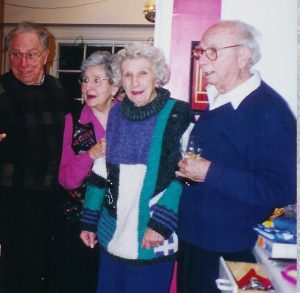 As I consider what I want to tell Karen, I remember visiting my mom’s best friend, Bel, in California when I was a teenager. Bel, who was spunky and adventurous in a way that seemed so different from my conservative mother, drove me from Berkeley to the small resort where I would work as a chambermaid for the summer.
As I consider what I want to tell Karen, I remember visiting my mom’s best friend, Bel, in California when I was a teenager. Bel, who was spunky and adventurous in a way that seemed so different from my conservative mother, drove me from Berkeley to the small resort where I would work as a chambermaid for the summer.
“Do you know how I met your mom?” she asked me, as we drove down the winding roads, past fragrant stands of eucalyptus trees.
“In Iceland, during the World War II,” I said. I had heard stories of the two of them taking a break from their work in the hospital by skiing, then stopping for a soak in a hot springs.
“No, we met earlier in Chicago. We were both nurses working the twelve-hour night shift. The hospital had a room with a couple of bunk beds so we could rest on breaks. One night I walked in there and heard the most heart-breaking sobbing. It was Frances, crying her eyes out. I asked her what was wrong and she said, ‘Nothing.’”
I smiled. That sounded like Mom, never wanting to admit anything was wrong.
“Then I asked her again and she sobbed out that her husband Sam had died six months ago from pneumonia. She was so sad she didn’t know if she could go on. A bunch of other nurses and I were going to Florida for a short vacation and I persuaded your mother to join us. But as it turned out, we never went; a week later I decided to join the Army and I encouraged her to come along. We’ve been best friends ever since.”
When I heard this story at the age of seventeen, I was too young to fathom my mother’s grief and despair. By the time I told Karen the story, I had some sense of what my mother must have gone through.
“Your Mom was really brave, to serve in the Army during wartime,” Karen says.
I feel a little swell of pride. Mom’s tales of traveling in the darkest night on the troop ship, with bombs falling nearby, were so familiar I had never considered her bravery and courage.
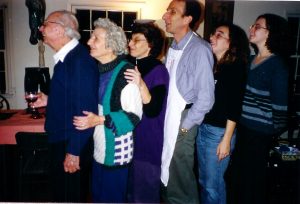 Now I tell Karen how my father, encouraged by Bel’s husband, wrote Mom a letter, telling her he was ready to marry a nice Jewish girl. Was she interested? Was she available?
Now I tell Karen how my father, encouraged by Bel’s husband, wrote Mom a letter, telling her he was ready to marry a nice Jewish girl. Was she interested? Was she available?
After some correspondence, Mom surprised herself by agreeing to meet him in Chicago. At the end of the week, my father asked her to marry him. She considered the offer for three weeks and accepted. Their whirlwind romance was fueled by practicality.
“What a great story,” Karen says. “Your mother must be an amazing woman.”
Sparked by Karen’s interest, I let myself feel my love for my mother as she used to be. I am in tears by the time our conversation ends.
“Thank you for asking me about my mother,” I say to Karen.
“Your stories make me want to call my own mom and hear her stories again.”
As I drive home, I think of more “mom” stories to share with my children and my brother. I see myself, along with my brother and father, as the carrier of my mother’s sacred legacy. I imagine myself tenderly fanning the embers, adding dry leaves and crumbled paper, creating a blaze with each memory. I realize I don’t have to give up Mom’s old self: I can be her historian and her scribe, carrying her stories with me, and making sure they live on.

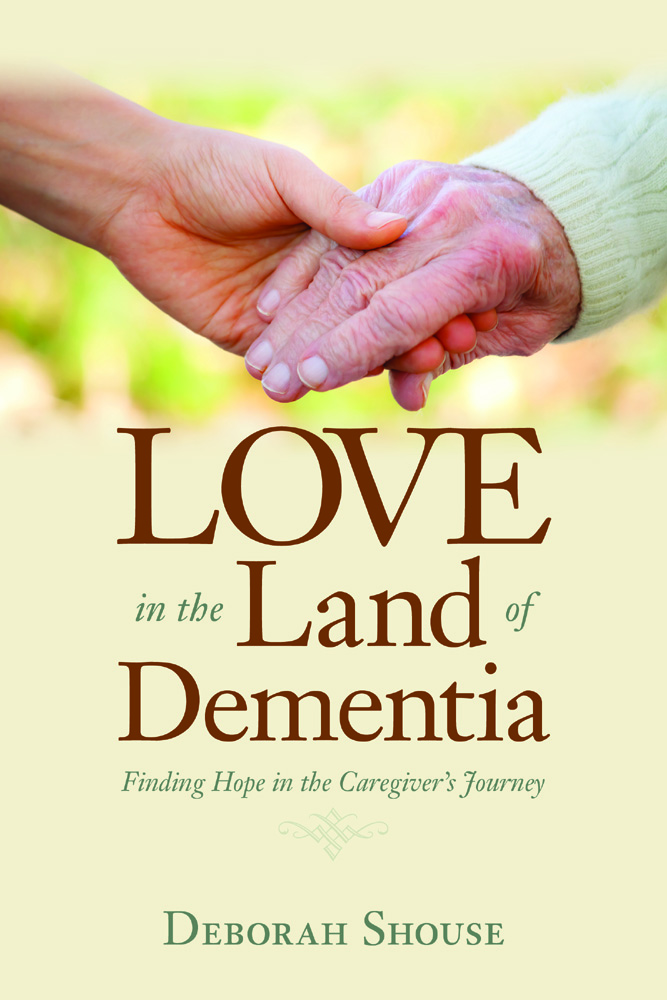
Educating on Dementia: A Vietnamese Doctor’s Quest
Throughout our journey in Vietnam, we met a number of inspiring elders. These include an 87-year-old public letter writer in the old Saigon train station, a 67-year-old woman carrying baskets of pomelos and bitter melons, a beautiful 74-year-old gardener hacking at weeds with a machete, a 100-year-old matriarch in a farming family, and an 83-year-old village chief. Because the life expectancy in Vietnam has risen over the last 20 years, its people are living longer. Along with that blessing comes an increased chance of dementia. Neurologist Trần Công Thắng. MD, and his team, Nguyen Tudny Vy and Le Thi Yen Vy, are dedicated to working with medical professionals and community members, educating on dementia.
“Many people think memory loss is just part of normal aging, ” Dr. Thang told us, when we visited him in Choray Hospital in Saigon. “We want people to understand that dementia is not a regular part of growing older—it’s a brain disease.”
Twenty years ago, few people were discussing dementia in Vietnam. But now, it’s a vital issue for two reasons. First, the country’s life expectancy has increased from age 64 to age 75. Second, many families no longer have seven or more children; they have two to three offspring. This intensifies the burden for family caregivers.
 Dr. Thang is a researcher, speaker, educator, and a founding member of the Association of Vietnamese Alzheimer’s Disease and Neurocognitive Disorders. Through his classes and diagnostic clinics, Dr. Thang and his colleagues offer people much needed information and resources. He is partnering with a local rehabilitation hospital in creating a day program for those living with dementia. The program will offer cognitive stimulation and social engagement for those living with dementia.
Dr. Thang is a researcher, speaker, educator, and a founding member of the Association of Vietnamese Alzheimer’s Disease and Neurocognitive Disorders. Through his classes and diagnostic clinics, Dr. Thang and his colleagues offer people much needed information and resources. He is partnering with a local rehabilitation hospital in creating a day program for those living with dementia. The program will offer cognitive stimulation and social engagement for those living with dementia.
Person by person, Dr. Thang is helping healthcare professionals understand the behaviors and issues associated with dementia. He hopes to make life better for family caregivers and their family members who have memory loss.


The Scent of Creativity: Three Reasons to Add Aromas into Your Life
Madeline could barely sleep at night. She was worried her husband would wake up confused and wander off, so she kept her hand on his chest all night. Her grown children, concerned about her exhaustion, called Jayne Clairmont, owner of English Rose Suites, a dementia consulting and home care business. Jayne listened sympathetically to Madeline’s story and offered a simple solution.
“Place a few drops of pure lavender oil in his navel or on the bottom of his feet before bed,” she advised.
Jayne has shared the powers of essential oils in her national speaking and consulting. She collaborated with Health Partners on a study of 26 memory care residents. The study showed that lavender drops, administered externally before bed, added 43 extra minutes to the sleep cycle. Some sleeping pills only provide an additional 13 minutes of sleep.
For Jayne, understanding essential oils is a simple way to deepen comfort and connection. She starts by learning more about the person living with dementia, so she best knows how to support him. She listens for issues, such as restless sleep, anxiety, or exhaustion. Then she offers a few easy aromatherapy solutions.
“Lavender also induces calm,” Jayne says. She recommends lavender essence for foot massages. When people are pacing and anxious, Jayne suggests a few drops of soothing lavender on a silk flower that they can hold and sniff or wear as a boutonniere.
For someone who’s struggling to stay alert, a few drops of peppermint applied with a warm cloth may help. Jayne may add drops of peppermint to water and use a diffuser or spray bottle to mist the air.
Citrus scents, such as orange and lemon, enhance appetite and help people wake up.
“Essential oils benefit both the care partner and the person living with dementia,” Jayne says. “Keep it simple. Don’t use too many oils and don’t use too much of any oil.”
Deborah Shouse is the author of Love in the Land of Dementia: Finding Hope in the Caregiver’s Journey.
Six Easy Steps for Creating Art that Sends a Message
Art is the only way to run away without leaving home. ~Twyla Tharp
Reverend Katie Norris knows firsthand the power of a welcoming environment. She has learning disabilities and works better in a room free of distractions. When her mom, Carolyn Farrell, was diagnosed with dementia, Katie turned to art as a way to deepen their connection. Her art projects were so satisfying that she wrote a book, Creative Connections in Dementia Care, offering simple and meaningful ideas for engaging through the arts.
Katie grew up going to Montessori schools where everything had a place and the work area was clean. She flourished in that environment and realized her mom would flourish as well.
To prepare the room, Katie removed (or minimized) clutter. She added a lamp to increase the light and reduce shadows. She used brightly colored tablecloths so it was easy to see the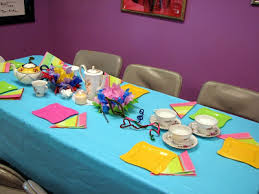 art paper.
art paper.
Creating note cards is one of Katie’s favorite projects, since they are fun and easy, and result in a tangible, useful gift. If you have time, you can make a card in advance, so you’ll have an example to share. This is a relaxing activity for people of all abilities and does not require an artistic temperament. The complete recipe for notecards is in Katie’s book.
- To begin, set out the materials.
- Fold paper into the desired size. Or you can buy blank cards and envelopes at a hobby store.
- Decide if you each want to make your own cards. Or you can work together.
- Use paints or colors to create a free form design. If you’re working with someone who likes more structure, draw some bright lines on the card to form a simple design. They can then paint within and around the design or highlight the picture by outlining it with buttons, glitter, stickers, or paint. Demonstrate the options and leave plenty of space for creative unfolding.
- Extras include painting the background of the card with a little paint roller, called a brayer brush, adding design with sponge daubers, or gluing on pictures gleaned from old magazines and cards.
- People also enjoy decorating the envelope.

The notecards have a variety of uses, depending on the desires of the person living with dementia. You can donate them to churches or children’s hospitals, give them to friends and family, or frame the finished product for display. Or you can send your own notes on it.
“This project works well with an intergenerational group,” Katie says. “We involved our faith community, by asking them to host a button drive for us. That gave us a chance to share the finished products with them.”
Sharing this art helps people understand the vast creativity of those living with dementia.
For more information about Katie and her book, visit www.RevKatieNorris.com
Deborah Shouse is the author of Love in the Land of Dementia: Finding Hope in the Caregiver’s Journey.
An Alzheimer’s Holiday Blessing
As my mother’s Alzheimer’s progressed, her spiritual openness increased.
This is an excerpt from my book Love in the Land of Dementia that describes Mom’s new way of celebrating the holidays.
**
We roll back into the facility’s dining room just as the show is ready to start. The singer, Thelda, kicks off her shoes and presses play on the boom box. Above the cheerful sound track, she sings Jingle Bells. She dances across the room with the remnants of ballroom steps. She stops in front of Mom and sings right to her. She gets on her knees, so she can look into Mom’s eyes, and keeps singing. Mom notices her and smiles a little.
Thelda moves on, singing to each of the patients gathered around, so intent on making a connection that she often forgets the words.
“Is it all right for your Mom to come to Christmas holiday events?” the activity director had asked me, when Mom moved into the skilled care portion of the nursing home.
“Yes, I’d like her to go to any activities. She likes the extra energy.”
I think Mom would approve of my decision, even though she has never celebrated Christmas. Growing up, her immigrant mother held on to the Jewish spirit of her home, kneading dough for Friday evening challah, observing each holiday and prayer period in her own way. Some orthodox women followed the religious law that commanded a small piece of the dough be burned as an offering to God. My grandmother was poor; she did not believe in burning good food, regardless of tradition. So she sacrificed a portion of the dough to her youngest daughter, my mother Fran. She created a “bread tail,” leftover dough that she baked, then smeared with butter and sprinkled with sugar . When Mom used to talk about her mother, she always mentioned this special treat.
Even when I was growing up, and we were the only Jewish family in our neighborhood, my mother still did not sing Christmas song. She let the holiday rush by her, like a large train, whooshing past and leaving her behind.
Now, I am singing Christmas carols to my Mom for the first time and she is smiling. She has moved beyond the place where the religions are different, beyond the place where she wants to separate the dough and make a sacrifice for tradition. Her new tradition is anyone who can make her smile.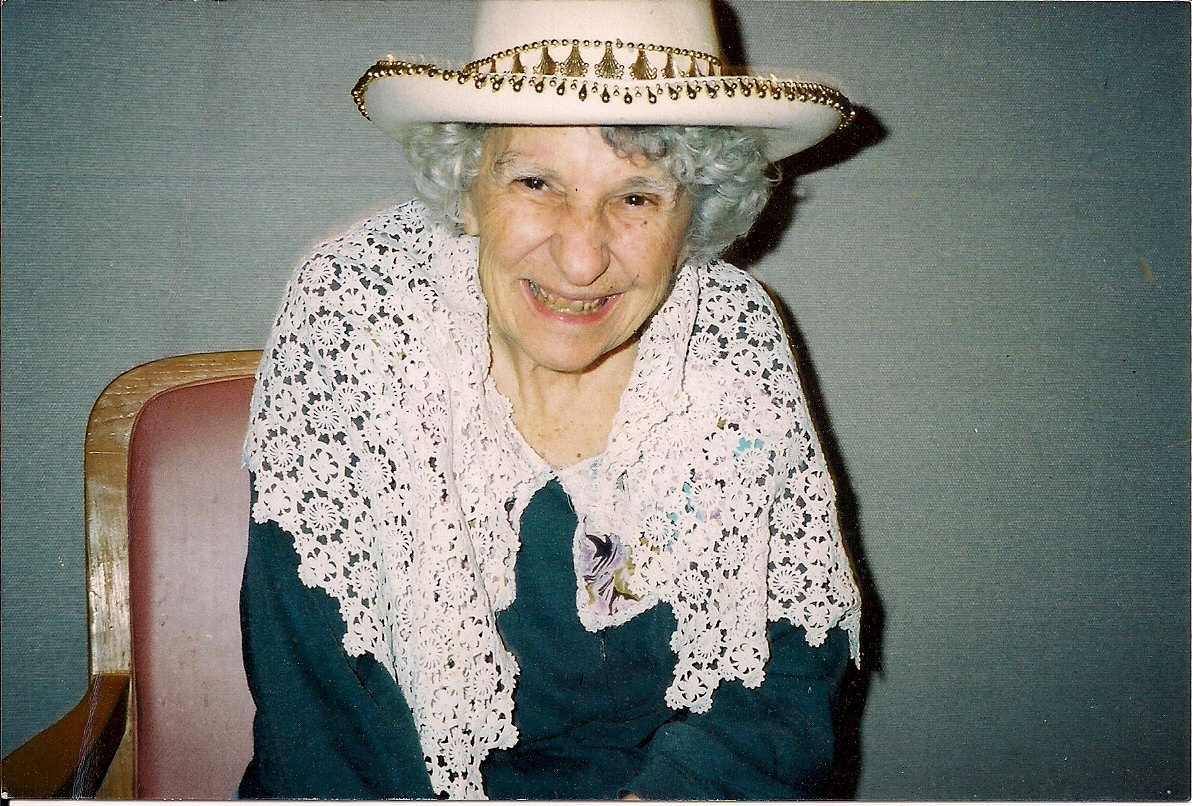
With each song, from White Christmas, to Silver Bells, to Frosty the Snowman, Thelda moves back to Mom, tapping her, acting sillier and sillier. Each time, Mom lifts her head and widens her mouth for a second.
For her finale, Thelda puts on a big red nose and sings Rudolph. When she dances in front of Mom with that scarlet nose, Mom laughs, her face a miracle in pure enjoyment. I laugh too, so delighted to see Mom engaged and absorbed.
Two weeks from now, I will bring a menorah and candles into my mother’s room. My father and I will have a short Chanukah ceremony with Mom. She will pick at the shiny paper covering the Chanukah gelt (chocolate candy disguised as money). She will slump over in her chair. But she will come back to life when she sees me, her only daughter, wearing a big red nose as I light the menorah.Here’s to a meaningful and fun holiday season.
I look forward to connecting with you when I resume blogging in early January.
Drawing out the Inner Artist: Seven Tips for Engaging People who have Dementia
“Every child is an artist. The problem is how to remain an artist once he grows up.” ― Pablo Picasso
Sharing the arts is one of our passions. We so appreciate the insightful work of Michael Samuels, M.D., co-founder and director, Arts as a Healing Force. These are his words, which originally appeared in the Huffington Post:
Anyone can use the healing power of art to reach a loved one living with Alzheimer’s disease. All it takes is an ordinary person who loves and cares for another. A recent article in the Boston Globe says, “Making music, painting or dancing — and seeing or hearing it — may be the most effective treatment for dementia to date.”
There has been new exciting research about art and Alzheimer’s that sheds light on this remarkable way of healing. Music and art stimulate areas of the brain not affected by Alzheimer’s and accesses memories through routes that avoid affected language centers. Art actually helps the brain navigate new neurological communication pathways. Even if the Alzheimer’s patient is unresponsive and can’t remember where they are, a song can stimulate the sweet memories of youth that lay long buried.
Any art that the Alzheimer’s patient enjoys will open a huge new way of healing — for yourself and for the one you love.
TIPS:
You can do it. Professional training is not necessary; anyone can be an artist/healer for a person living with Alzheimer’s.
Keep it simple. Music is the easiest and most researched way to reach a person with Alzheimer’s but you also can use painting, sculpting and poetry. Gear your art to the person’s skill level at the moment.
Go into the past to heal the present. Art evokes memories. Any art that brings up a memory is powerful. A song from a past event evokes the memory of a first kiss. A painting or photograph of the family home can help evoke childhood memories.
Make it stimulating. Choose bright colors, collage from old photograph albums, lively music, dances.
Make art in a sacred space. Make the place as wonderful and beautiful as you can. Play soft music in the background — make the lighting bright enough to see easily, add scents from aroma therapy and even make a small altar with loved objects from the past.
Support with loving kindness and compassion. Make all your comments nonjudgmental and loving. Art and healing is about process, not the product. It’s all about love and relationship.
Ask them to tell you the story about the artwork. If your loved one can still speak ask them to share the memories that come with the art, music or words.
According to the Alzheimer’s Association, music and art can enrich the lives of people with Alzheimer’s disease by allowing for self-expression and engagement even after dementia has progressed. Many organizations are using the power of art to help those living with Alzheimer’s. The Assisted Living Federation of America (ALFA) has an annual art contest at senior centers to encourage elderly people to stimulate their brains by making art. The I’m Still Here Foundation started Artists for Alzheimer’s initiative (ARTZ) that helps more than 10,000 Alzheimer’s and dementia patients attend arts events. This greatly enhances the lives of Alzheimer’s patients and reduces their symptoms.
Michael Samuels, M.D., Co-founder and director, Arts as a Healing Force
MICHAEL SAMUELS M.D. is a physician, artist, guided imagery specialist, and one of the foremost experts in body, mind, and spirit medicine today. He is the co-founder and director of Arts as a Healing Force. Samuels teaches at San Francisco State University’s Institute of Holistic Studies and is the author of 22 books, including the bestsellers The Well Body Book, Seeing with the Mind’s Eye, and the Well Baby Book. His latest book is HEALING WITH THE ARTS: A 12-Week Program to Heal Yourself and Your Community, co-authored by Mary Rockwood Lane, R.N., Ph.D.